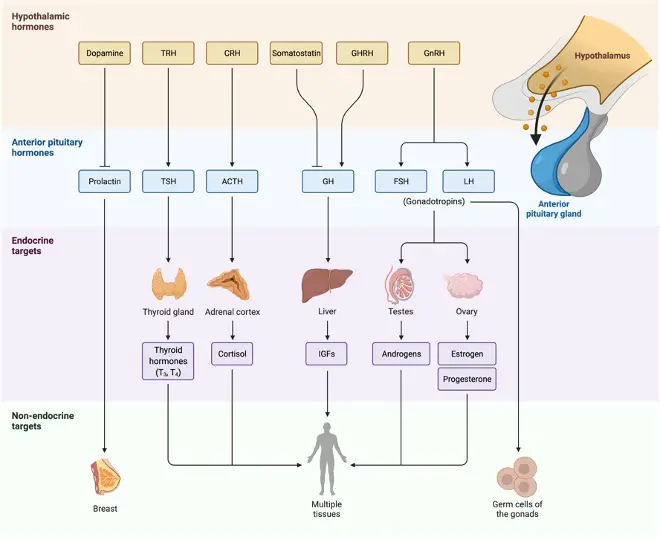Table of Contents
Aldosterone Definition
A mineralocorticoid that regulates salt and water balance in the kidneys and has the chemical formula C21H28O5. A mineralocorticoid is a chemical (drug or hormone) that is mostly produced in the adrenal cortex. It affects ion transport in the epithelial cells of the renal tubules, which regulates electrolytes (such as ions) and water balance. Aldosterone is the most well-known mineralocorticoid.
What is Aldosterone?
Aldosterone is naturally created in the zona glomerulosa, which is located on the outer margin of the adrenal cortex. Aldosterone synthase is used to biosynthesize it from cholesterol (a steroid hydroxylase cytochrome P450 enzyme located in the zona glomerulosa).
The following factors stimulate aldosterone biosynthesis: (1) increased plasma angiotensin III levels, (2) increased plasma angiotensin II, ACTH, or potassium levels, (3) plasma acidosis, (4) adrenoglomerulotropin (promotes aldosterone secretion), and (5) stretch receptors stimulating aldosterone release from the adrenal gland, especially when blood pressure is low.
Aldosterone Function
Aldosterone affects the kidneys, which are involved in sodium reabsorption as well as passive water reabsorption. It’s also linked to a decrease in potassium levels in the blood. It accomplishes this via the following mechanisms:
1. Aldosterone enters the distal tubule and collecting duct of the kidney nephron’s main cells, where it works on the nuclear mineralocorticoid receptor. The basolateral Na+/K+ pumps are activated, and 3 Na+ ions are pumped out of the cell into the interstitial fluid. 2 K+ ions are absorbed into the cell from the interstitial fluid at the same time.
As a result of the concentration gradient, Na+ ions and water are reabsorbed into the bloodstream, whereas K+ ions are released into the urine through the collecting duct lumen.

2. Aldosterone enhances the permeability of Na+ ions in the apical membrane by upregulating epithelial sodium channels in the collecting duct and colon.
3. K+ secretion into the tubular lumen is stimulated by aldosterone.
4. Aldosterone promotes Na+ and water reabsorption in the stomach, salivary glands, and sweat glands in exchange for K+.
5. Aldosterone promotes H+ secretion in the cortical collecting tubules’ intercalated cells via the H+/ATPase.
Aldosterone is linked to a rise in blood pressure and blood volume due to its biological effects. However, at large doses, it causes salt retention, high blood pressure, abnormal heart rhythms, and perhaps paralysis. Hyperaldosteronism refers to a condition in which the level of aldosterone is abnormally high, and hypoaldosteronism refers to a condition in which the amount of aldosterone is unusually low.
Aldosterone Citations
- Factors affecting the aldosterone/renin ratio. Horm Metab Res . 2012 Mar;44(3):170-6.
- The Role of Aldosterone in Obesity-Related Hypertension. Am J Hypertens . 2016 Apr;29(4):415-23.
- Hypertension: renin-angiotensin-aldosterone system alterations. Circ Res . 2015 Mar 13;116(6):960-75.
- Figures are created with BioRender.com







